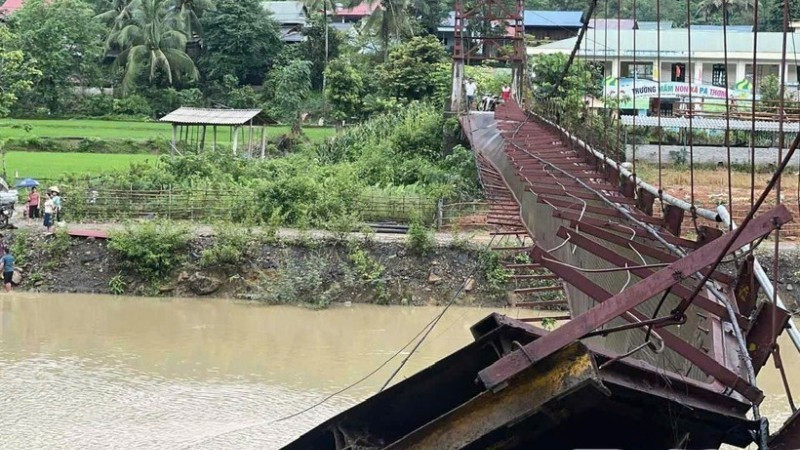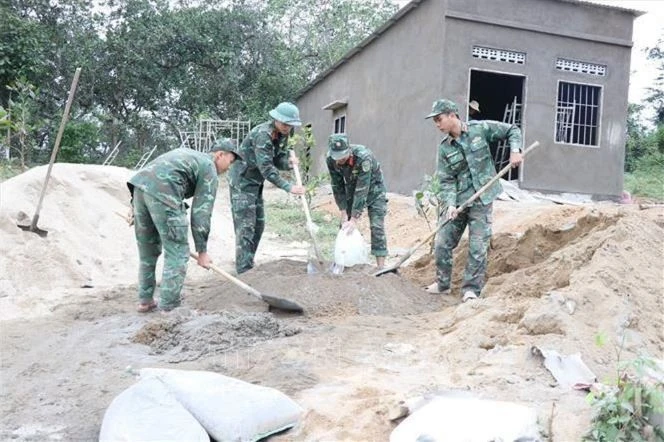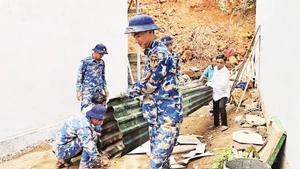According to official reports on July 22, the storm’s aftermath severely impacted provinces including Thanh Hoa, Nghe An, Ninh Binh, Hung Yen, and Phu Tho. In Nghe An, one person was swept away by floodwaters and remains missing, while another was injured. More than 420 houses were damaged or had their roofs blown off, with Thanh Hoa reporting the highest number at 251 homes.
Agricultural damage is extensive, with nearly 120,000 hectares of rice fields submerged. Ninh Binh alone accounted for 74,000 hectares, followed by Hung Yen (26,000 ha) and Thanh Hoa (over 19,000 ha). In addition, thousands of livestock were reported to have perished or were swept away.
Emergency response teams are currently surveying damage, operating drainage stations, and assisting affected communities in ongoing recovery efforts.
The downpour caused the Ca River in Nghe An to exceed historic flood levels. At Muong Xen station, water peaked at 145.89 metres, 3.89 metres above alert level 3 and 0.4 metres higher than the 1996 flood record. Similar alarming readings were reported at Thach Giam and Con Cuong stations, with downstream areas remaining under threat.
Authorities warn of continued high flood risk along the lower Ca River in the coming days, potentially surpassing emergency thresholds. As a result, major hydropower and irrigation reservoirs are now operating under emergency protocols.
Of particular concern is Ban Ve Hydropower Reservoir in Nghe An, which recorded an unprecedented inflow of 12,800 cubic metres per second, far exceeding safety checks corresponding to a once-in-5,000-year flood event. High inflow rates persisted through the morning of July 23, forcing continued water discharge.
Across the North and as far south as Ha Tinh, more than 4,400 irrigation reservoirs are near or at full capacity. Ninety-one are under repair and five under construction, raising serious safety concerns amid continued rainfall.
The storm also triggered six serious dike incidents. In Ha Noi, long cracks appeared along the right banks of the Cau and Hong Rivers. Erosion and subsidence were reported in Thanh Hoa and Ninh Binh, prompting emergency reinforcement measures with bamboo piles, tarpaulins, and sandbags.
In response to the crisis, Prime Minister Pham Minh Chinh issued Directive No. 119/CD-TTg on July 22, urging immediate disaster response efforts, particularly in Nghe An. Deputy Prime Minister Tran Hong Ha inspected Thanh Hoa, while ministerial teams have been dispatched to Nghe An and Ninh Binh.
Nghe An has activated emergency flood protocols, deployed personnel to monitor key infrastructure, and initiated controlled discharges from Ban Ve Dam to protect downstream communities.
According to the National Centre for Hydro-Meteorological Forecasting, widespread rainfall of 60–120mm, possibly over 200mm in some areas, is expected in the North and north-central provinces through July 25. High risks of flash floods, landslides, and urban inundation remain.
Localities are urged to maintain vigilance, implement disaster response plans, and evacuate vulnerable populations where necessary.
















